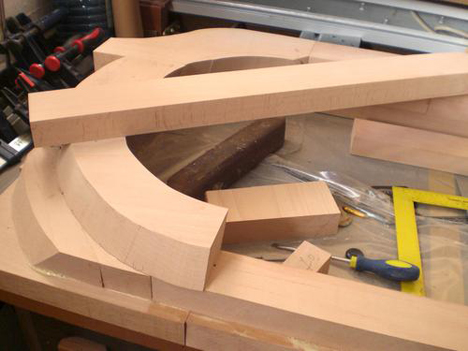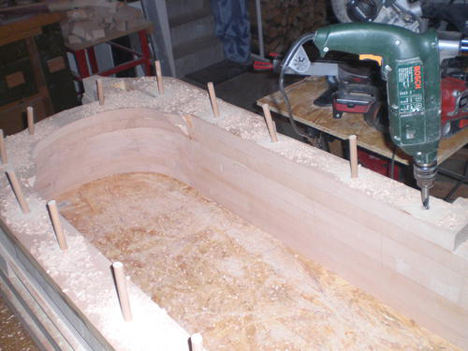![]()
Congratulations to our App to the Future Design Challenge finalists and winners!! We asked designers to change the future by designing an app for Windows Phone that would help us create, connect or simply impress our future selves. You answered the call with hundreds of amazing and inspiring submissions from scrapbooks and font managers, trip trackers or convoy road managers, to diaries that don't broadcast your every thought or will even seal them up for the future. After hours of review and deliberation by our fantastic jurors Chris Caldwell (GSkinner.com), Jennifer Bove (Kicker Studio), Corrina Black (Microsoft), Pratik Kothari (Techark Solutions), and Eric Ludlum (Core77), we are proud to announce our 50 finalists and five winners!
All winners and finalists will receive a 1-year subscription to the Windows Phone Dev Center development community and any finalists who launch their apps in the Windows Phone store will become our notable finalists, scoring a Windows Phone. Winners not only receive a subscription to Dev Center, Windows Phone and Microsoft Surface with Touch Cover, but they also get an app design consultation with a Windows Phone design team member and their app featured on Microsoft's Channel 9. Keep checking back over the next few months as we start Phase 2 of the competition: watching the winners and finalists turn their ideas into reality. And now, the Apps to the Future...
WINNERS
4weather—a weather app that lets you zero in what the weather will be like when and where you actually plan to be outside by utilizing a new adaptive forecast feed at its root, an extended and more informative set of "climacons" and finally the choice of the best forecast data vendor for your region.
"Of all the weather apps I've seen this is the only one that actually does something useful for you as well as telling you the weather." —Chris Caldwell
"Lots of thought into the data/algorithm, smart use of sensors, phone in idle mode, seems like content/utility delivery is simple. Prototyping with users would show whether passive information presentation is contextually relevant / useful and if the user input is too laborious." —Jennifer Bove
"This could be boiled down to a simple AI + GPS that would quickly learn what weather conditions you like or dislike in which locations." —Eric Ludlum
"Very unique idea. The description of the app concept provides a very good explanation behind why there is a need for such an app. Instead of providing a general weather forecast, this app exemplifies the Windows Phone's You paradigm by personalizing weather based on you and your information." —Pratik Kothari
![ATTF-winners-4weather.jpg]()
![Alexander Uhlig]() App Designer:
App Designer:
Alexander Uhlig
Leipzig, Germany
Alexander is currently a Master of Physics student and expects to graduate by the end of 2013. Right now he is working on his Masters project, which is related to an econometric subject.
At the age of 16 he gained his first insight into human-computer interaction as a tutor and not long afterwards took over the soft- and hardware- support of a small pharmaceutical company.
Getting to know different cultures, and new people with other traditions fascinates him. Right after finishing school he went to Australia on a work & travel visa. He completed the first part of his Master studies in Leeds, UK as an exchange student.
Alexander's strength is blending creative and problem solving abilities. He is passionate about solving versatile tasks and looks forward to the challenges the development of 4weather will bring along.
fitCHAMP—a social fitness app that combines the powerful APIs of the personal fitness trackers that you and your friends use onto a single, beautifully designed dashboard where you can track and compete with your friends through certain metrics like distance moved, steps taken, and calories burned.
"Could be fantastic if the platform API's work well together and you can map data onto similar and comparable points." —Chris Caldwell
"Great socialization/gamification of the dataset and activity." —Eric Ludlum
"Similar apps exist but the design of this app provides a fresh look. Social component is certainly a motivating factor to challenge someone." —Pratik Kothari
![App to the Future: fitCHAMP]()
![Christian Valencia]() App Designer:
App Designer:
Christian Valencia
Seattle, US
christianvalenciadesign.com
Credits: Shelby Blair
Christian is currently a Junior UX Designer working at Ratio Interactive, a small digital agency in Seattle, WA. He truly loves designing simple, yet engaging interfaces for many platforms: Web, iOS, Android, Windows Phone and Windows 8.
HappyAppy—a smile is contagious and what better way to spread a smile than by sharing a dance? HappyAppy is an interactive mobile application that allows friends to connect by dancing for one another when words are not enough. This allows people to virtually connect in a physical and emotional way that is not currently possible.
"I started smiling instantly :) You made my day! Besides being unfathomably simple, this is an experience that you'll have fun creating as well as receiving." —Chris Caldwell
"Simple, delightful, great use of physical gesture. Adorable characters, smart constraints around time limits, movements, etc." —Jennifer Bove
"It is cute and there is opportunity for a broader spectrum of sentiment (angsty appy? morose appy? estatic appy?)." —Eric Ludlum
"Uses various Windows Phone accelerometer features to create a customized greeting. This is certainly designed to connect and delight." —Pratik Kothari
"What a creative and fun way to connect with your friends and family and make them smile! This app makes me smile :D" —Corrina Black
![App to the Future: HappyAppy]()
![Yian Ling Cheong & Sarah Sykes]() App Designers:
App Designers:
Yian Ling Cheong & Sarah Sykes
Singapore & Wisconsin
yianlingyianling.com
sarahsykes.us
Yian Ling and Sarah met while attending graduate school at Carnegie Mellon University. Although they come from opposite ends of the world, their backgrounds are surprisingly similar. Both Yian Ling and Sarah have a bachelors degree in industrial design and work experience in design research. When they are not designing, both of them enjoy traveling the world, collecting fresh inspiration and getting their hands on new projects.
Tide&a Surfing forecast app that creates a more gestural way of exploring the waves through time whilst allowing fast access to the data that most is important to surfers.
"This makes me want to buy a surfboard, abandon my landlocked city, and drive thousands of miles to the nearest ocean and start surfing!" —Chris Caldwell
"Simple, quick access to info on the go. Fluid use of gesture, application interface doesn't get in the way. Easy to share." —Jennifer Bove
"Awesome and beautiful. The sine wave display feels like the pure essence of the phenomenon and is at home in the Windows UI." —Eric Ludlum
"Overall very good design and a useful app." —Pratik Kothari
![App to the Future: Tide]()
![Martin Spurway]() App Designer:
App Designer:
Martin Spurway
Warwick, United Kingdom
martinspurwaydesign.co.uk
Martin is a young Industrial Designer currently working for DCA Design in Warwick, United Kingdom. Having graduated from Loughborough Design School in 2011 his work focuses on creating connected products, brands and experiences. When these are designed at the same time, really new and interesting experiences emerge. This is not currently being implemented by most companies.
It is an exciting time for design, where different fields such as UI/ UX, Web Design, Packaging and traditional Industrial Design are coming together and the boundaries are becoming more and more blurred.
TripUs—connect all your social activities about a trip through one app. Organize all your pictures, Facebook updates, check-ins and tweets into a Trip timeline with invited friends and share information and photos with those friends in your network.
"Where were you on my last road trip? What a great way to spread the travel bug!" —Chris Caldwell
"An easy way to organize personal media into a narrative—trips are a natural for this." —Eric Ludlum
"Good design and layout." —Pratik Kothari
"Fun way of connecting with friends to capture shared events in a visually compelling, immersive, and memorable manner." —Corrina Black
![App to the Future: TripUs]()
![Sittitsak Jiampotjaman]() App Designer:
App Designer:
Sittitsak Jiampotjaman
Bangkok, Thailand
stainfilm.com
Sittisak is a Web/UI Designer living in Bangkok.
We can't reveal too much about these apps before they're launched, but here are the finalists we'll also be keeping an eye on:
(more...)![]()
![]()
![]()
![]()











 Pedestal not included
Pedestal not included












 By
By 












































































 Image courtesy of
Image courtesy of 


 By
By 


 App Designer:
App Designer: 
 App Designer:
App Designer: 
 App Designers:
App Designers: 
 App Designer:
App Designer: 
 App Designer:
App Designer: 

 Artwork by Chuck Anderson/NoPattern
Artwork by Chuck Anderson/NoPattern




















